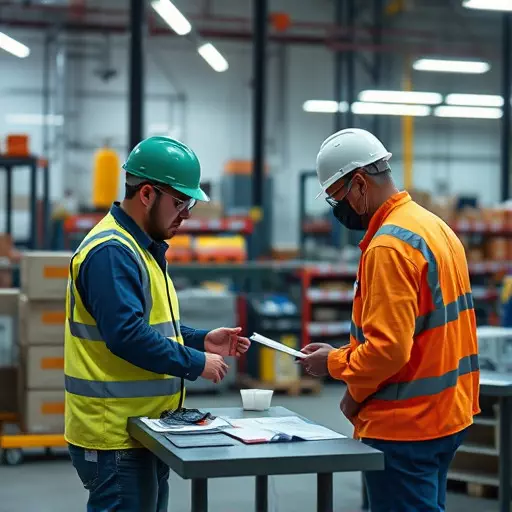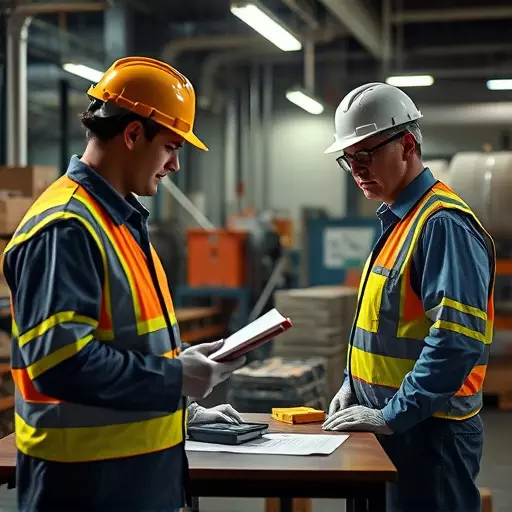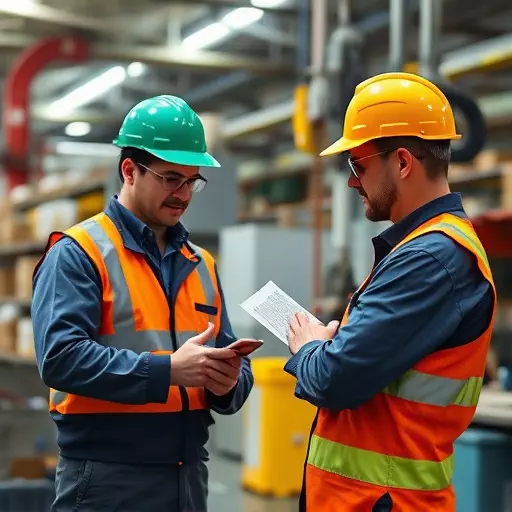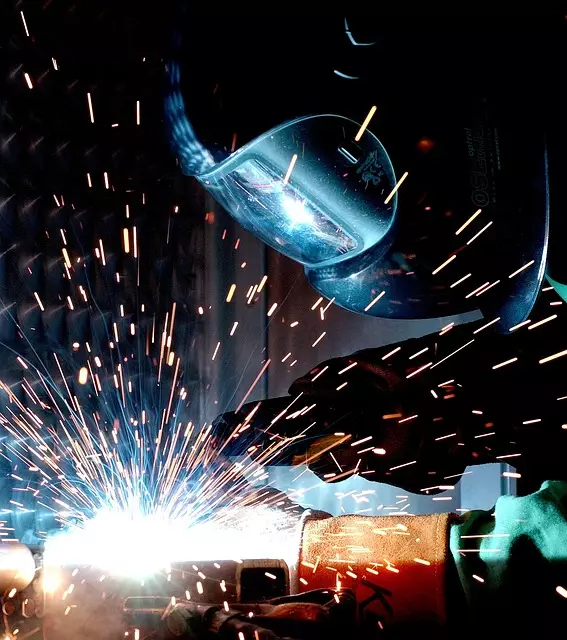Industrial hygiene consultants play a crucial role in ensuring healthy work environments by evaluating ventilation systems and conducting workplace hazard assessments. They help maintain indoor air quality by understanding complex dynamics, including the design, placement, and efficiency of ventilation components like exhaust fans, vents, ductwork, and filters. Consultants use Occupational Exposure Limits (OELs) as benchmarks to identify risks from hazardous substances such as volatile organic compounds (VOCs), particulate matter, and gases. By combining advanced testing methods with expert analysis, they optimize ventilation systems, mitigate workplace hazards, and ensure compliance with regulations, ultimately fostering safer industrial settings. Regular maintenance is vital for continuous system optimization.
In today’s world, proper ventilation systems are paramount for ensuring worker safety and health. This article provides a comprehensive guide to evaluating these critical components of any workplace. We’ll start with a basic understanding of ventilation systems and their roles in maintaining air quality. Then, explore the essential contributions of industrial hygiene consultants during workplace hazard evaluations. We’ll delve into identifying risks, understanding occupational exposure limits, and employing advanced testing techniques for thorough assessments. Finally, learn effective strategies to optimize ventilation post-evaluation, ensuring a safer, healthier work environment.
- Understanding Ventilation Systems: A Basic Overview
- Role of Industrial Hygiene Consultants in Evaluation
- Workplace Hazard Evaluation: Identifying Air Quality Risks
- Occupational Exposure Limits and Their Significance
- Comprehensive Assessment: Testing and Measurement Techniques
- Strategies for Optimizing Ventilation Systems Post-Evaluation
Understanding Ventilation Systems: A Basic Overview

Ventilation systems are essential components in any workplace, designed to maintain a safe and healthy environment for employees. These systems play a crucial role in controlling airborne contaminants, ensuring proper air quality, and mitigating risks associated with occupational exposure limits. Understanding how ventilation works is vital for industrial hygiene consultants conducting workplace hazard evaluations.
Effective ventilation involves the circulation of fresh air, removal of contaminated air, or a combination of both. In industrial settings, these systems often include exhaust fans, intake vents, ductwork, and filters to control the movement of air. By evaluating ventilation design, placement, and efficiency, consultants can identify potential issues that may lead to poor indoor air quality or increased exposure to harmful substances, thus helping organizations adhere to occupational exposure limits and maintain a safe workplace.
Role of Industrial Hygiene Consultants in Evaluation

Industrial Hygiene Consultants play a pivotal role in evaluating ventilation systems within industrial and commercial settings. Their expertise lies in assessing workplace hazards and ensuring environmental safety for employees. These consultants are well-versed in understanding complex ventilation dynamics, air quality standards, and occupational exposure limits set by regulatory bodies.
By leveraging their knowledge of industrial hygiene, they conduct thorough inspections, identify potential risks, and propose solutions to optimize ventilation effectiveness. Their involvement is particularly crucial when it comes to mitigating risks associated with hazardous substances, ensuring compliance with safety protocols, and maintaining a healthy work environment.
Workplace Hazard Evaluation: Identifying Air Quality Risks

Workplace Hazard Evaluations play a pivotal role in ensuring safe and healthy working conditions, especially regarding air quality. Industrial hygiene consultants are tasked with identifying potential risks associated with indoor air pollution, which can have severe consequences for employee health and productivity. This process involves meticulously examining various factors within an industrial or commercial setting.
One of the key aspects is assessing occupational exposure limits set by regulatory bodies for different pollutants. These limits define safe concentrations of substances like volatile organic compounds (VOCs), particulate matter, and other hazardous gases. By comparing measured air quality levels with these established limits, consultants can pinpoint areas of concern. Such evaluations are crucial in industries where processes emit harmful substances, ensuring that workers are not exposed to levels exceeding safety thresholds.
Occupational Exposure Limits and Their Significance

Occupational Exposure Limits (OELs) play a pivotal role in ensuring worker safety and health within industrial settings. These limits, established by regulatory bodies, set specific thresholds for hazardous substances in the workplace, aiming to protect employees from potential health risks. Industrial hygiene consultants often rely on OELs as a cornerstone of their workplace hazard evaluation process. By understanding these limits, they can assess whether airborne contaminants, such as chemicals, dust, or fumes, are present at levels that could cause adverse effects over time.
The significance of OELs extends beyond compliance with regulations. They provide critical guidelines for designing and maintaining effective ventilation systems. Industrial hygiene consultants use OELs to recommend appropriate control measures, including improving ventilation to dilute hazardous substances, implementing engineering controls, or requiring personal protective equipment. This proactive approach helps create safer work environments, reduces the risk of occupational diseases, and ensures that businesses prioritize employee well-being.
Comprehensive Assessment: Testing and Measurement Techniques

When conducting a ventilation system evaluation, a comprehensive assessment is crucial to ensure optimal air quality in industrial and workplace settings. This involves employing advanced testing and measurement techniques to accurately gauge the performance and efficiency of the ventilation system. Industrial hygiene consultants play a vital role here, utilizing specialized equipment to measure factors like carbon dioxide (CO2) levels, temperature, relative humidity, and air velocity across different zones of the facility. These data points are then compared against established occupational exposure limits to identify potential hazards or areas for improvement.
The evaluation process may include flow testing, pressure differential measurements, and even visual inspections to pinpoint any leaks, blockages, or inefficiencies in the system. By combining quantitative data with expert analysis, industrial hygiene consultants can offer insightful recommendations to enhance ventilation effectiveness, thereby mitigating workplace hazards and creating a safer, healthier environment for employees.
Strategies for Optimizing Ventilation Systems Post-Evaluation

After a thorough ventilation system evaluation, the next step is to implement strategies that optimize its performance and ensure a safe working environment. Industrial hygiene consultants play a pivotal role in this process by offering expert insights tailored to specific workplace hazard evaluations. They analyze the results of the assessment, taking into account factors like air quality, circulation patterns, and potential sources of contamination.
Based on these findings, they recommend adjustments to maintain or improve ventilation efficiency. This might include modifying system design, enhancing filtration systems to meet occupational exposure limits, or integrating advanced technologies for better control. Regular maintenance schedules are also crucial to keep the ventilation system optimized and prevent any downtime that could impact indoor air quality and employee health.


